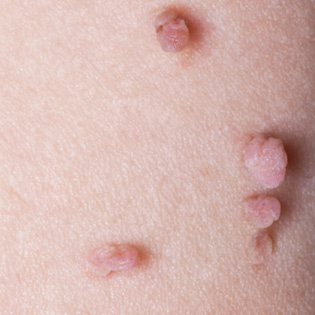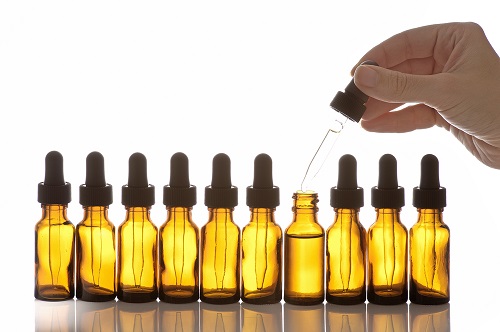If you think that baby bump is the only physical change you notice during pregnancy, you are wrong. While there will certainly be a long list of food cravings, there will definitely be several changes to your skin during pregnancy. Be ready to deal with issues like spider veins and stretch marks along with skin tags. Many women do not expect skin tags during pregnancy, but these tiny pieces of hanging skin are quite common and usually develop in areas where your skin rubs against clothing or skin. They may develop along the neck, eyelids, underarms, in the groin, and under the breasts.
Why Do They Occur?
People usually develop skin tags when they have diabetes or are obese. Why you develop skin tags during pregnancy is still unclear. Experts believe that this happens due to a change in hormones that trigger growth of skin cells in certain areas. Some believe that skin tags are the result of the excessive friction caused by rubbing of skin. It is due to this particular reason that women develop these skin tags in the later stages of their pregnancy when they gain more body weight.
Are They Serious?
No, there is no need to worry about skin tags. They are harmless, but they may become irritated easily when they are in the groin or armpit. This can cause slight discomfort. In many cases, skin tags go away after you have delivered your baby. However, they may sometimes persist even after delivery, but you can try several ways to get rid of these skin tags.
How to Get Rid Of Skin Tags During Pregnancy
 You do not experience any discomfort unless the skin tags are in areas where they get irritated easily. Your doctor will ask you to wait until your pregnancy is over before trying any treatment option for skin tags. Your dermatologist can remove them easily if you find them unsightly. It is possible to snip them off with scissors, but that usually depends on their size and number.
You do not experience any discomfort unless the skin tags are in areas where they get irritated easily. Your doctor will ask you to wait until your pregnancy is over before trying any treatment option for skin tags. Your dermatologist can remove them easily if you find them unsightly. It is possible to snip them off with scissors, but that usually depends on their size and number.
What Doctors May Do
While your doctor may suggest against removing skin tags during pregnancy, they may use one of three approaches to resolve the issue. For instance:
- Cutting it off with surgical scissors or a scalpel. Your doctor will make a cut to get rid of these skin tags, and this may leave a cut. How deep the cut is usually depends on whether tags have cells that go underneath the skin. Making a deeper cut is important to remove the tags completely to keep it from growing back. Deeper cut may require stitches as well.
- Freezing it with liquid nitrogen. The procedure involves spraying a small amount of cold liquid nitrogen on the skin tag and then removing it. You may develop a small blister but it usually heals on its own.
- Burning it off by passing an electric current through a wire and using it to eliminate the tags. They touch the wire with the upper layers of your skin to get rid of the skin tags. You may require multiple treatments to remove skin tags completely.
What You Can Do
 In addition, you can also use essential oils to get rid of skin tags. The most effective essential oils for skin tags are frankincense oil, tea tree oil, castor oil, and oregano oil. Applying tea tree oil to the skin tags is by far the best way to remove skin tags naturally. You may not like its smell but it works great and is safe to use during pregnancy.
In addition, you can also use essential oils to get rid of skin tags. The most effective essential oils for skin tags are frankincense oil, tea tree oil, castor oil, and oregano oil. Applying tea tree oil to the skin tags is by far the best way to remove skin tags naturally. You may not like its smell but it works great and is safe to use during pregnancy.
While these methods work quite well, you may develop new skin tags after you remove the first ones. Talk to your doctor if you are prone to getting skin tags during pregnancy.
Other Skin Changes to Expect During Pregnancy
Skin tags in pregnancy are harmless but can be quite irritating. They look ugly too. However, getting skin tags is not the only issue you will experience during pregnancy. There are some others as well. For instance:
- Glow: You will develop that special "glow" everyone talks about pregnant women to have. It looks as if you are blushing and it happens due to an increased blood flow during pregnancy.
- Blotchy skin: During the second trimester until the end of your pregnancy, you may notice blotchiness on your skin. Most women notice yellow or brown-colored patches. This happens because your skin starts producing more pigment due to a change in hormones. The issue will resolve on its own once you have delivered your baby.
- Acne: You may also have to deal with acne breakouts during pregnancy. Be sure to use a gentle facial cleanser to keep your pores from getting clogged.
- Itchy skin: It is not uncommon to develop a rash that looks quite like heat rash. It can be quite itchy too. All you can do is use anti-itch cream to relieve itching. You will start to feel better after delivery.
